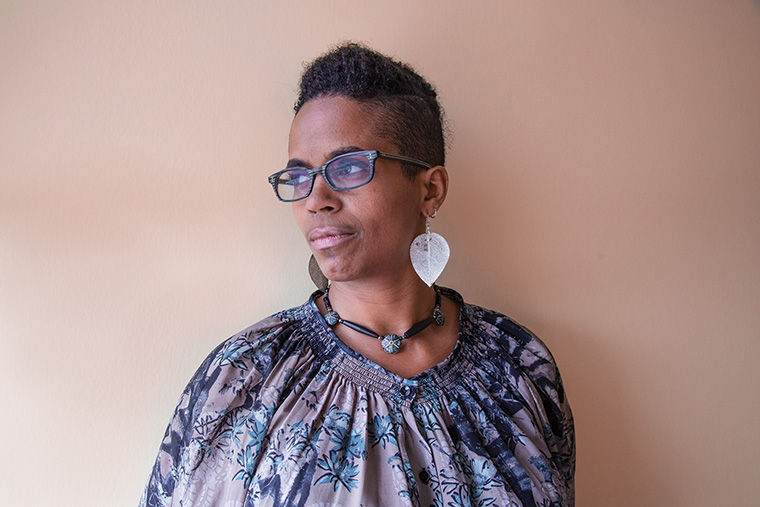Diversity committee to be formed through self-nominations
Diversity committee to be formed through self-nominations
December 7, 2015
Nearly eight weeks after the Strategic Plan Implementation committees formed, the college introduced a new committee to oversee the plan’s diversity, equity and inclusion goals.
In a Nov. 30 email to faculty and staff, President and CEO Kwang-Wu Kim announced that faculty and staff can self-nominate to become members of the Diversity, Equity and Inclusion Committee by Dec. 15.
Onye Ozuzu, interim dean of the School of Fine & Performing Arts, will chair the committee, which will include eight other members to be appointed by Kim, whom they will report to. The committee will focus on three goals: to participate in all Strategic Plan implementation committees, create a diversity statement for the college and develop a diversity strategy for training and education collegewide.
While committees dedicated to the other goals of the Strategic Plan began earlier in the Fall 2015 Semester, Kim said the DEI Committee took longer to form because he wanted the other implementation committees up and running. He also said he needed to think about all the aspects necessary to create the DEI committee, including how people would be chosen and who should lead them.
“Sometimes, I need to gestate on an idea for a long time, then not just the desired outcome comes clear but also the steps I need to take materialize in my mind and I was waiting for that to happen,” Kim said. “Now, it’s very clear to me.”
Kim said he hopes to have selected the committee members by the week of Dec. 21 so the committee can convene as early as January at the beginning of the Spring semester.
Kim said self-nominees must submit a one-page statement and a CV of their professional work. Members will be chosen for their expertise in discussing and dealing with the systemic obstacles of diversity as well as for their experience navigating those obstacles.
“Personal experience is always authentic, but it doesn’t mean you’re in a position to think about how do you deal with the structural and systemic challenges at the core of diversity, equity or inclusion,” Kim said. “I had to find a statement that would acknowledge people have personal experience and also differentiate that from actual expertise in dealing with systemic issues of diversity.”
Nic Ruley, an adjunct professor in the Television Department, said he hopes the committee will fully include students’ input and address diversity in the curriculum, the details of which were not outlined in the announcement.
“It can’t come from the top-down,” Ruley said. “It needs to start more with the needs of the people who are actually experiencing what these decisions will affect.”
There has not been a formal announcement to students, but Kim said the student voice is essential to the committee.
“I think students should self-nominate as well, but it’s different because I don’t expect students to have the same kinds of resume or experience,” Kim said. “I am still thinking about that.”
Jeremey Johnson, a junior creative writing major, said student input is critical and he thinks students would be interested in participating in the committee
“[The] student body is your diversity,” Johnson said. “If you don’t have students involved, then essentially you have a group of people who are disconnected from the diversity on campus talking about [it].”
Kim said the committee took longer to form than others because he was trying to determine who should chair the committee. He chose Ozuzu—who moderated the Diversity, Equity and Inclusion online discussions during the Strategic Plan’s input and feedback phases—because they have held conversations about diversity since Kim came to the college in 2013.
“If I announced it in September, I would have announced it [with] me as the chair,” he said. “Looking backward, I think that would have been a big mistake. It would have made the college feel like, ‘He’s just going to do what he wants to do.’”
Kim said Ozuzu did not immediately accept the role as chair. Before saying yes, Ozuzu said she thought about the importance of making sure diversity was going to be involved in all aspects of the Strategic Plan and across the college.
Ozuzu said Kim will continue to participate in the conversation but on an intermittent basis.
“It is powerful for him to take a step back as president and bring a committee of voices from various points of the campus together to then work that out with an actually engaged multiplicity of voices whose access to power is more complex than having the president in the room,” Ozuzu said.
The Strategic Plan states that the committee’s first charge is to create a diversity statement for the college, but Kim and Ozuzu decided to change the sequence of the committee’s goals, according to Kim.
Ozuzu said the committee needs to be engaged with other implementation committees before creating a mission statement so it can understand how diversity is being discussed in those settings.
“Diversity, equity or inclusion—like water or electricity—needs to run throughout our system,” she said. “You don’t want to put it off to the side somewhere where [it seems like], ‘Oh, if you’ve got an issue with diversity, equity or inclusion, go over to that committee.’ It needed to be something that was deeply integrated. I wanted to make sure my work as a dean would be integrated into strategic planning processes at their core, not isolated in the idea of diversity.”








